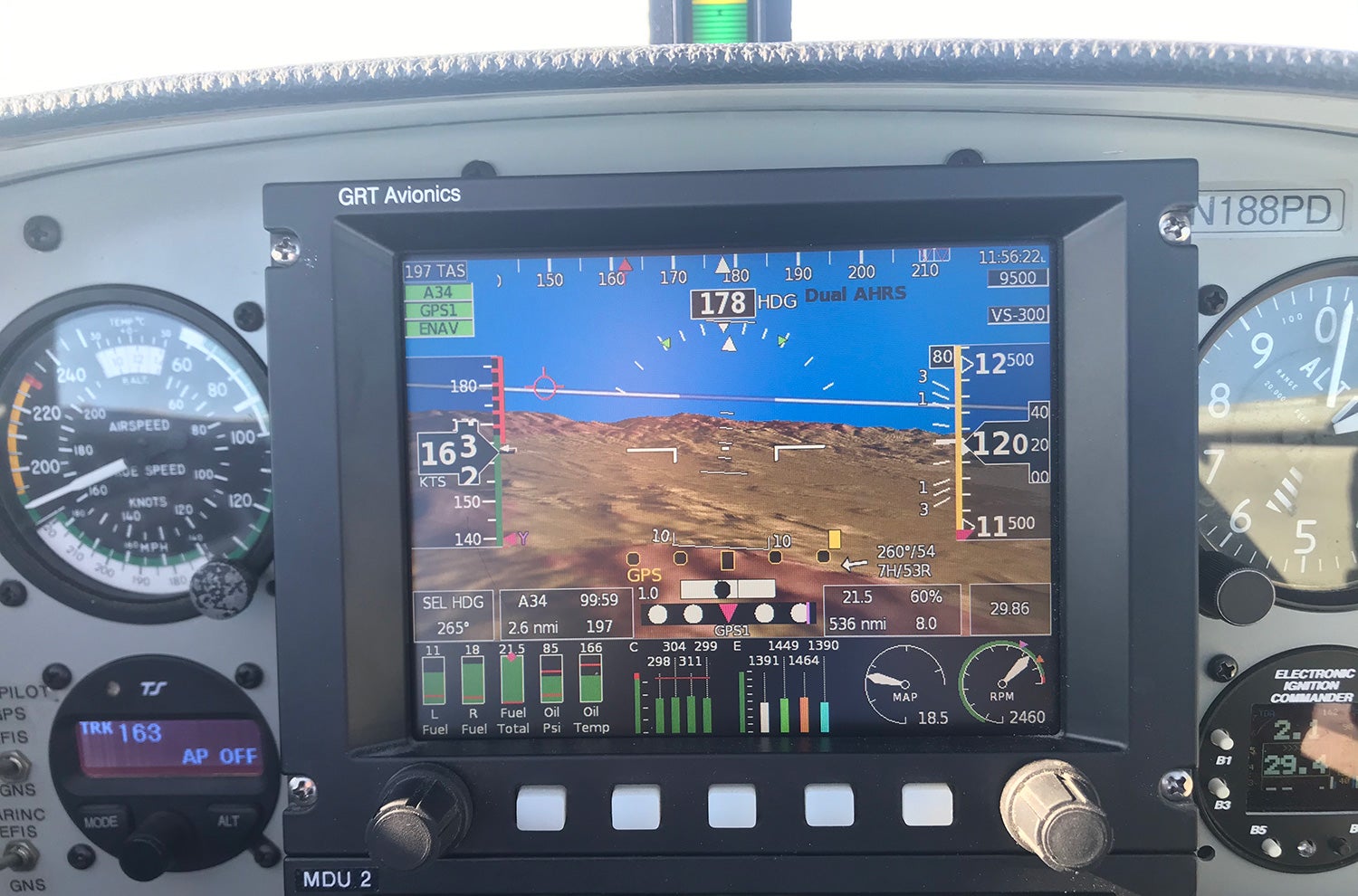Oh, for a sailplane on a day like today! I took off on a short after-breakfast flight to do a little post-maintenance test hop. The winds were predicted to come up about 10:00 , so I wanted to get it out of the way early – but I could already see the gusts hitting the wind sock as I taxied back for take-off. Sure enough, on initial climb (to the west), I could feel the bumps starting to build, indicating the wind had arrived earlier than normal. Perfectly fine for what I wanted to do, but I certainly didn’t want to get too close to the Sierra Nevada, just ten miles to the west of me.
 You see, the Sierra is the reason why we have great soaring out here in Nevada. The westerly winds push out of California and climb the western slope, then when they hit the crest, they overshoot the top of the vast ridge, pushing the air molecules up. Eventually, gravity intervenes, and the air begins to settle, but as with all dynamic systems, you get some oscillation, so what you would see (if you could see the air) is a series of waves, with the crests running parallel to the mountains, and extending out over the states of Nevada and Utah. It would like a lot like a washboard, actually. Sailplane pilots use this wave to gain altitude – climbing in the up-going air, and avoiding the downside of the each wave. If you’ve ever flown across Nevada on a windy day with your autopilot engaged for altitude hold, you probably noticed your airspeed going up as you hit ascending air (the nose pitching down to hold altitude), and then decaying as you hit the downdraft, (as the airplane pitches up to avoid sinking). On a windy day, I’ve seen an RV have speed excursions between 80 knots and redline attempting to stay at 11,000’.
You see, the Sierra is the reason why we have great soaring out here in Nevada. The westerly winds push out of California and climb the western slope, then when they hit the crest, they overshoot the top of the vast ridge, pushing the air molecules up. Eventually, gravity intervenes, and the air begins to settle, but as with all dynamic systems, you get some oscillation, so what you would see (if you could see the air) is a series of waves, with the crests running parallel to the mountains, and extending out over the states of Nevada and Utah. It would like a lot like a washboard, actually. Sailplane pilots use this wave to gain altitude – climbing in the up-going air, and avoiding the downside of the each wave. If you’ve ever flown across Nevada on a windy day with your autopilot engaged for altitude hold, you probably noticed your airspeed going up as you hit ascending air (the nose pitching down to hold altitude), and then decaying as you hit the downdraft, (as the airplane pitches up to avoid sinking). On a windy day, I’ve seen an RV have speed excursions between 80 knots and redline attempting to stay at 11,000’.
As I climbed out this morning, headed for 10,000, I noticed that I had a heck of a climb rate going, more than I could contribute just to cool air. I turned until I was pointed south, and as I passed through 10,000’, I pitched for level flight—and was still going up at a thousand feet a minute. I gave the RV-8 its head, and watched as we effortlessly climbed up to 12,000, where I decided to pitch down until the rate of climb abated. I finally got the elevator ride stopped as I hit 197 knots TAS—just 3 knots below redline! This was with the prop pulled back to about 2450, and the throttle wide open, with the EFIS computing about 60% power. 197 knots at 60%? Yeah… I’ll take that! I turned the nose back to the north and pulled the throttle back almost to idle and pitched for level flight – and I was doing a normal cruise of 175 knots TAS with essentially idle power—amazing!
Coming down, of course, was simple a matter of getting off the elevator by turning a few miles east and finding neutral air—the sink can actually be a bit terrifying sometimes. It was hard to give up so much free energy, but I knew that if it was blowing 54 knots at 12,000’ already, the surface winds would be howling by the time I got down, so it was time to call it a day.
And despite the fact that this is April 1st – this is all true.













